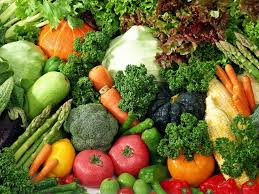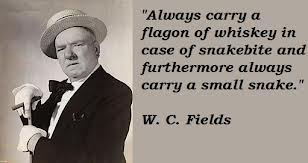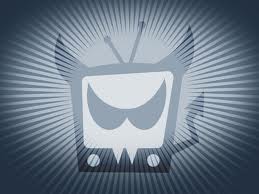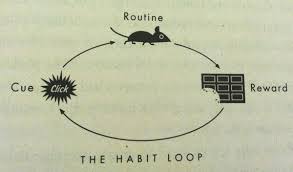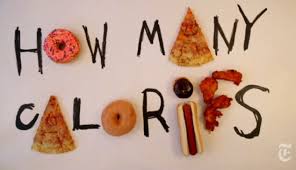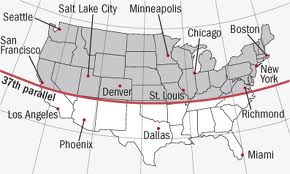Week 9: What Is the Glycemic Index?
 Friday, December 11, 2015 at 3:00AM
Friday, December 11, 2015 at 3:00AM 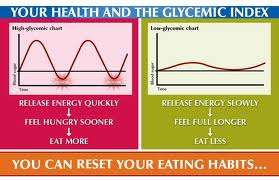 We tend to think that all carbohydrates, proteins, and fats are created equal. Instead there are important differences between the various types. There are some surprising differences in how our bodies process things—carbohydrates in particular. Our assignment for this week is to understand and apply the glycemic index to our dietary choices.
We tend to think that all carbohydrates, proteins, and fats are created equal. Instead there are important differences between the various types. There are some surprising differences in how our bodies process things—carbohydrates in particular. Our assignment for this week is to understand and apply the glycemic index to our dietary choices.
Here is a video that explains it
You do not need to buy their fiber pill. Eat better instead. I am not saying that this product is bad, I have no idea. It is better to get your fiber from real food. If Since you are keeping track of what you are eating, you know how much fiber you are getting. A product like this might be an option if you are not getting enough.
What the glycemic index measures is how quickly the carbohydrate turns into sugar in your body. There are some surprises. One of the worst offenders is the ubiquitous potato. It turns into sugar very fast, faster in fact than sugar itself. Oatmeal is not bad, but instant oatmeal is, well, it is instant in its turning into sugar. So it you are eating this you are just fooling yourself.
Here is a chart from Harvard.edu:
|
FOOD |
Glycemic index (glucose = 100) |
Serving size (grams) |
Glycemic load per serving |
|
BAKERY PRODUCTS AND BREADS |
|
|
|
|
Banana cake, made with sugar |
47 |
60 |
14 |
|
Banana cake, made without sugar |
55 |
60 |
12 |
|
Sponge cake, plain |
46 |
63 |
17 |
|
Vanilla cake made from packet mix with vanilla frosting (Betty Crocker) |
42 |
111 |
24 |
|
Apple, made with sugar |
44 |
60 |
13 |
|
Apple, made without sugar |
48 |
60 |
9 |
|
Waffles, Aunt Jemima (Quaker Oats) |
76 |
35 |
10 |
|
Bagel, white, frozen |
72 |
70 |
25 |
|
Baguette, white, plain |
95 |
30 |
15 |
|
Coarse barley bread, 75-80% kernels, average |
34 |
30 |
7 |
|
Hamburger bun |
61 |
30 |
9 |
|
Kaiser roll |
73 |
30 |
12 |
|
Pumpernickel bread |
56 |
30 |
7 |
|
50% cracked wheat kernel bread |
58 |
30 |
12 |
|
White wheat flour bread |
71 |
30 |
10 |
|
Wonder™ bread, average |
73 |
30 |
10 |
|
Whole wheat bread, average |
71 |
30 |
9 |
|
100% Whole Grain™ bread (Natural Ovens) |
51 |
30 |
7 |
|
Pita bread, white |
68 |
30 |
10 |
|
Corn tortilla |
52 |
50 |
12 |
|
Wheat tortilla |
30 |
50 |
8 |
|
BEVERAGES |
|
|
|
|
Coca Cola®, average |
63 |
250 mL |
16 |
|
Fanta®, orange soft drink |
68 |
250 mL |
23 |
|
Lucozade®, original (sparkling glucose drink) |
95±10 |
250 mL |
40 |
|
Apple juice, unsweetened, average |
44 |
250 mL |
30 |
|
Cranberry juice cocktail (Ocean Spray®) |
68 |
250 mL |
24 |
|
Gatorade |
78 |
250 mL |
12 |
|
Orange juice, unsweetened |
50 |
250 mL |
12 |
|
Tomato juice, canned |
38 |
250 mL |
4 |
|
BREAKFAST CEREALS AND RELATED PRODUCTS |
|
|
|
|
All-Bran™, average |
55 |
30 |
12 |
|
Coco Pops™, average |
77 |
30 |
20 |
|
Cornflakes™, average |
93 |
30 |
23 |
|
Cream of Wheat™ (Nabisco) |
66 |
250 |
17 |
|
Cream of Wheat™, Instant (Nabisco) |
74 |
250 |
22 |
|
Grapenuts™, average |
75 |
30 |
16 |
|
Muesli, average |
66 |
30 |
16 |
|
Oatmeal, average |
55 |
250 |
13 |
|
Instant oatmeal, average |
83 |
250 |
30 |
|
Puffed wheat, average |
80 |
30 |
17 |
|
Raisin Bran™ (Kellogg's) |
61 |
30 |
12 |
|
Special K™ (Kellogg's) |
69 |
30 |
14 |
|
GRAINS |
|
|
|
|
Pearled barley, average |
28 |
150 |
12 |
|
Sweet corn on the cob, average |
60 |
150 |
20 |
|
Couscous, average |
65 |
150 |
9 |
|
Quinoa |
53 |
150 |
13 |
|
White rice, average |
89 |
150 |
43 |
|
Quick cooking white basmati |
67 |
150 |
28 |
|
Brown rice, average |
50 |
150 |
16 |
|
Converted, white rice (Uncle Ben's®) |
38 |
150 |
14 |
|
Whole wheat kernels, average |
30 |
50 |
11 |
|
Bulgur, average |
48 |
150 |
12 |
|
COOKIES AND CRACKERS |
|
|
|
|
Graham crackers |
74 |
25 |
14 |
|
Vanilla wafers |
77 |
25 |
14 |
|
Shortbread |
64 |
25 |
10 |
|
Rice cakes, average |
82 |
25 |
17 |
|
Rye crisps, average |
64 |
25 |
11 |
|
Soda crackers |
74 |
25 |
12 |
|
DAIRY PRODUCTS AND ALTERNATIVES |
|
|
|
|
Ice cream, regular |
57 |
50 |
6 |
|
Ice cream, premium |
38 |
50 |
3 |
|
Milk, full fat |
41 |
250mL |
5 |
|
Milk, skim |
32 |
250 mL |
4 |
|
Reduced-fat yogurt with fruit, average |
33 |
200 |
11 |
|
FRUITS |
|
|
|
|
Apple, average |
39 |
120 |
6 |
|
Banana, ripe |
62 |
120 |
16 |
|
Dates, dried |
42 |
60 |
18 |
|
Grapefruit |
25 |
120 |
3 |
|
Grapes, average |
59 |
120 |
11 |
|
Orange, average |
40 |
120 |
4 |
|
Peach, average |
42 |
120 |
5 |
|
Peach, canned in light syrup |
40 |
120 |
5 |
|
Pear, average |
38 |
120 |
4 |
|
Pear, canned in pear juice |
43 |
120 |
5 |
|
Prunes, pitted |
29 |
60 |
10 |
|
Raisins |
64 |
60 |
28 |
|
Watermelon |
72 |
120 |
4 |
|
BEANS AND NUTS |
|
|
|
|
Baked beans, average |
40 |
150 |
6 |
|
Blackeye peas, average |
33 |
150 |
10 |
|
Black beans |
30 |
150 |
7 |
|
Chickpeas, average |
10 |
150 |
3 |
|
Chickpeas, canned in brine |
38 |
150 |
9 |
|
Navy beans, average |
31 |
150 |
9 |
|
Kidney beans, average |
29 |
150 |
7 |
|
Lentils, average |
29 |
150 |
5 |
|
Soy beans, average |
15 |
150 |
1 |
|
Cashews, salted |
27 |
50 |
3 |
|
Peanuts, average |
7 |
50 |
0 |
|
PASTA and NOODLES |
|
|
|
|
Fettucini, average |
32 |
180 |
15 |
|
Macaroni, average |
47 |
180 |
23 |
|
Macaroni and Cheese (Kraft) |
64 |
180 |
32 |
|
Spaghetti, white, boiled, average |
46 |
180 |
22 |
|
Spaghetti, white, boiled 20 min, average |
58 |
180 |
26 |
|
Spaghetti, wholemeal, boiled, average |
42 |
180 |
17 |
|
SNACK FOODS |
|
|
|
|
Corn chips, plain, salted, average |
42 |
50 |
11 |
|
Fruit Roll-Ups® |
99 |
30 |
24 |
|
M & M's®, peanut |
33 |
30 |
6 |
|
Microwave popcorn, plain, average |
55 |
20 |
6 |
|
Potato chips, average |
51 |
50 |
12 |
|
Pretzels, oven-baked |
83 |
30 |
16 |
|
Snickers Bar® |
51 |
60 |
18 |
|
VEGETABLES |
|
|
|
|
Green peas, average |
51 |
80 |
4 |
|
Carrots, average |
35 |
80 |
2 |
|
Parsnips |
52 |
80 |
4 |
|
Baked russet potato, average |
111 |
150 |
33 |
|
Boiled white potato, average |
82 |
150 |
21 |
|
Instant mashed potato, average |
87 |
150 |
17 |
|
Sweet potato, average |
70 |
150 |
22 |
|
Yam, average |
54 |
150 |
20 |
|
MISCELLANEOUS |
|
|
|
|
Hummus (chickpea salad dip) |
6 |
30 |
0 |
|
Chicken nuggets, frozen, reheated in microwave oven 5 min |
46 |
100 |
7 |
|
Pizza, plain baked dough, served with parmesan cheese and tomato sauce |
80 |
100 |
22 |
|
Pizza, Super Supreme (Pizza Hut) |
36 |
100 |
9 |
|
Honey, average |
61 |
25 |
12 |
The complete list of the glycemic index and glycemic load for more than 1,000 foods can be found in the article "International tables of glycemic index and glycemic load values: 2008" by Fiona S. Atkinson, Kaye Foster-Powell, and Jennie C. Brand-Miller in the December 2008 issue of Diabetes Care, Vol. 31, number 12, pages2281-2283. [end quote]
This list is not the only metric you should use. High fat foods will have a low gylcemic index.
Here is a video presentation on the glycemic index as your homework for this week. Also study the chart.
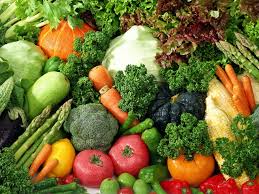 Note that the presenter makes some errors. As good as fiber is, the difference between white and wheat bread is not that high unless you get very coarse bread. But an important point she brings out is that sweet potatoes, and especially yams, are much slower to convert into sugar. I still remember the shock when I discovered the whole wheat bread I was using was not helping my blood sugar.
Note that the presenter makes some errors. As good as fiber is, the difference between white and wheat bread is not that high unless you get very coarse bread. But an important point she brings out is that sweet potatoes, and especially yams, are much slower to convert into sugar. I still remember the shock when I discovered the whole wheat bread I was using was not helping my blood sugar.
The glycemic Index of foods is important to everyone, but particularly important to those whose metabolism is faulty—those with diabetes and metabolic syndrome. We need to be aware of the glycemic values of what we eat.
Action Plan: Your action for this week is to take the high glycemic foods you are eating now and replace them with different foods of the same type. So replace whole wheat/white bread with coarse whole wheat bread; replace potatoes with yams; and replace bananas with grapefruit.
Remember, if you are not writing down what you are eating, you do not really know what you are eating. Drop diet drinks from what you drink. Remember all the steps you have been making and continue with them.
 Plan What You Eat
Plan What You Eat 